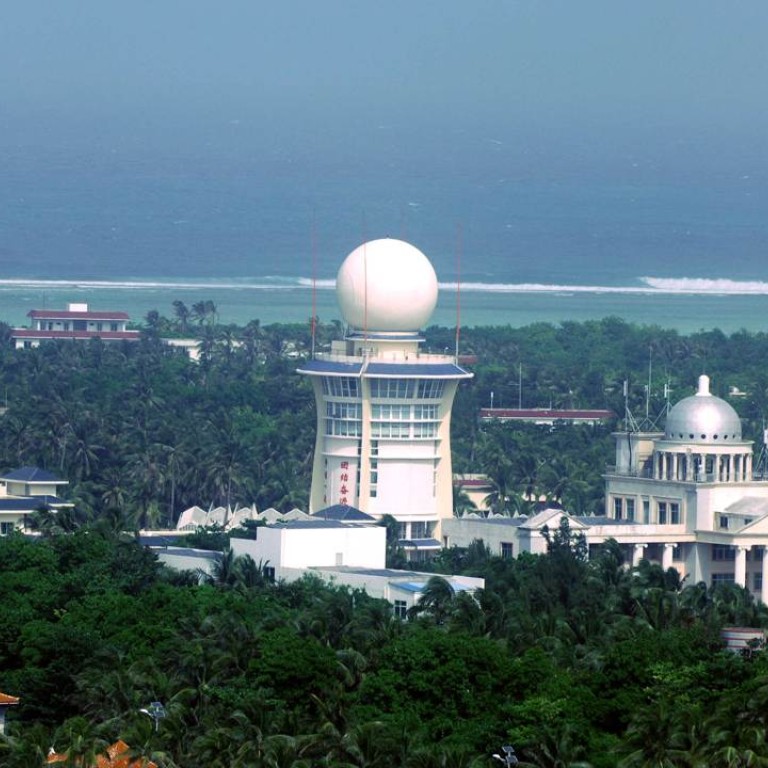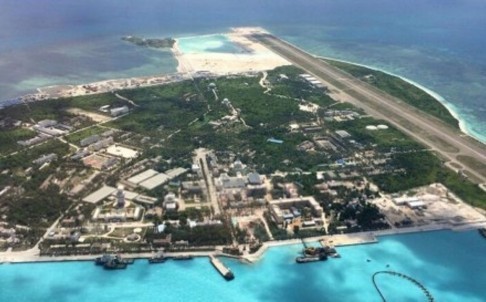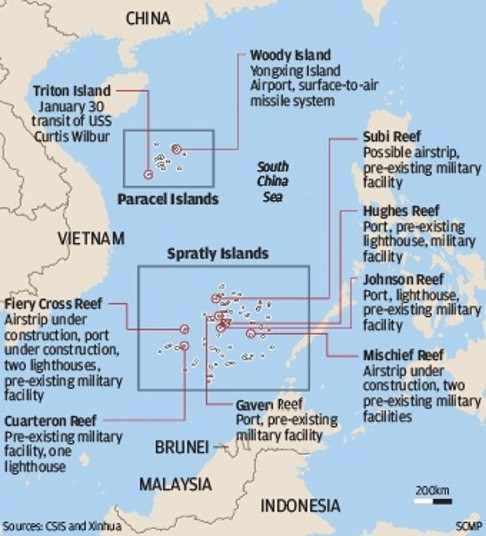
Update | China may send anti-ship missiles to disputed South China Sea to beef up defence: analysts
Air defences the main priority for Chinese forces in the region and more advanced weaponry will strengthen Beijing’s position, experts say
China may deploy more advanced weapons – such as anti-ship missiles – in the South China Sea, analysts say, amid criticism that Beijing has been militarising the disputed region.
The plan would allow Beijing to beef up its defence and monitoring in the waters, deterring potential adversaries in a crisis, the analysts say.
Recent reports that Beijing had installed an advanced surface-to-air missile system on Woody Island in the Paracel Islands chain prompted protests from the United States, further straining already tense ties.
“It’s of serious concern. We’ve had these conversations with the Chinese, and I am confident that over the next days we will have further, very serious conversation on this,” US Secretary of State John Kerry said on Wednesday. But Beijing said any military facility on the disputed islands was for self-defence.
Such installations were necessary because of increasing threats from the US, Chinese observers said. They also saw Beijing’s move as a response to patrols by US warships in waters close to Chinese-controlled islands, one of them near Woody Island.
Watch: China defends actions on disputed island
Li Jie, senior researcher at the PLA Naval Military Studies Research Institute, said China would advance military deployment if the US “pushed too hard”.
“Air strikes are the biggest threat, so air defence is the main priority for now,” Li said.
“It depends on how things develop as to whether anti-ship missiles will be deployed. [It] depends on conditions including the level of provocation from the US and other non-claimant powers, and our own needs.”
China might deploy shorter-range missiles on smaller islands, and more facilities such as radars and satellites to integrate the defence structure, Li said. Drone patrols would also be stepped up.

Retired general Xu Guangyu, now senior researcher at the China Arms Control and Disarmament Association, said the military build-up on Woody Island would eventually be on a par with that of a municipality.
The island presently had neither the environment nor infrastructure to support advanced facilities such as a permanent airbase, but this would change gradually, he said.
“In the future, two things can be certain: regular landing of military aircraft, and joint exercises and drills by the air force and navy,” Xu said.
READ MORE: Beijing defends use of armaments in South China Sea after Taiwan claims surface-to-air missiles deployed on disputed island
Beijing set up Sansha city on Woody Island, which China calls Yongxing, to administer the South China Sea.
China’s military ambitions for the island date back to at least the 1980s, when state propaganda called for a transformation of the island into “an aircraft carrier that never sinks”, said Yanmei Xie, senior analyst with the International Crisis Group.

Apart from expanding its air defence range, China was also building up its ability to monitor and gather intelligence on foreign vessels, planes and submarines, the analyst said. This meant installing more radars and building fuelling stations to allow aircraft to venture further out in the sea.
“If tensions really spike, this can complicate the calculation of incoming vessels, planes and submarines,” Xie said.
Niel Ashdown, deputy editor of IHS Jane’s Intelligence Review, said China could also deploy short-range air defence systems to some of the islands.
Air strikes are the biggest threat, so air defence is the main priority
Most analysts said the armaments would be concentrated in the Paracel Islands chain, which is closer to Chinese shores and involves fewer claimants. Beijing considers its claims less disputable in the Paracels.
“It would be more significant – and provocative – if China began to deploy similar weapon systems to islands and reefs in the Spratlys,” Ashdown said.
Tensions in the South China Sea have escalated since China began reclaiming some of the disputed islands under its control in late 2013.
The international tribunal court in The Hague is due to decide on the Philippines’ challenge against China’s claims in the region.
Beijing has refused to participate in the case, but Xie said it was anxious about the reputational cost of any adverse ruling on China.
“It could be the case that China is expediting a lot of these activities in the South China Sea in anticipation of a ruling in the arbitration,” Xie said.

